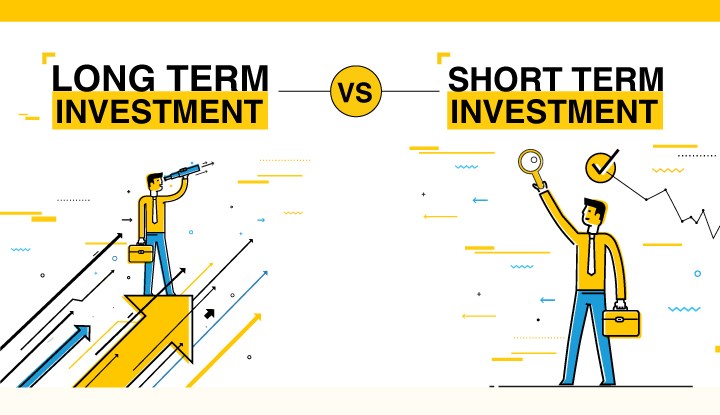Like several other areas, decision making in the investment sphere is also influenced by numerous factors such as goals of investing, appetite for risks and personal situation. An investor makes one of the major decisions whether to engage in long-term or short-term. Each trading trick comes with a unique set of considerations and requirements, and the choice ultimately depends on alignment with one’s goals. In this article, we will explore between these approaches by examining the different cases in terms of long-term and short-term investments.

Long-term trading:
- This entails being patient in order to gain long term profits through purposeful accumulation of capital. Typically, these people opt for a long term trading approach that preserves assets over many decades with the sole aim of accumulating wealth and increasing capital.
- One of the most potent weapons that long-term investor has on his hand is the idea of compounding return. With time, your investments can give you more returns that would grow your portfolio quite large. This ‘s snowballing is an age-old way of gathering riches and it’s why choosing the right stocks to buy today is a crucial step in building wealth.
- Generally, long-term traders remain stable during periods of high market instability. It is known that the immediate future of a market may be unpredictable, while longer-term tendencies of the market tend to follow long-term trends. This technique will also assist in mitigating emotions involved when dealing in regular trading and varying markets.
- Another attractive feature of long-term is tax efficiency. Capital gains tax rates are generally lower for assets held for more than a year, making them an attractive option for those looking to reduce their tax liability.
Short-term trading:
- In contrast, short-term trading involves the pursuit of quick profits. Traders using this stock market strategy constantly monitor market movements, trying to take advantage of fluctuations over days, weeks, or months have strategies in their arsenal of tools such as day trading routes, day trading, swing trading, and so on.
- For those who yearn for the opportunity to profit from short duration trade setups, the idea of intraday trading strategy is quite appealing. Therefore, it enables traders to respond promptly to such markets changes, which could cause an enormous increase in shares.
- Nonetheless, it presents its own problems. Marketing regularly involves increased transaction costs, and constant posts need emotionally straining management in real time. To succeed in short-term trading, investors need to have access to market information, trading strategies and make rational decisions quickly.
Strategic plan and goals-
- The decision between long-term and short-term trading should always be based on individual financial goals and personal circumstances. If your goal is to build a nest egg for retirement, save for a child’s education, or ensure long-term financial security, long-term trading may be the most appropriate option.
- However, you might be looking to make a temporary profit or exploit the temporary characteristics of the market with short-term trading. It entails a sizable level of dedication to keep track of the market trends, respond swiftly to market changes, bear the burden of short term losses and rely on real-time information like NSE live data to make informed decisions.
A mixed strategy can often be an effective way to balance your goals. Some investors allocate a portion of their assets to long-term investors and use short-term trading strategies for the rest. This strategy allows for long-term accumulation and quick profit seeking.